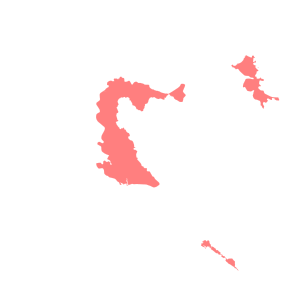
Back مذبحة فوكوفار Arabic Вуковарско клане Bulgarian Masakr u Vukovaru BS Matança de Vukovar Catalan Masakr na farmě Ovčara Czech Massaker von Vukovar German Masacre de Vukovar Spanish کشتار ووکوار Persian Massacre de Vukovar French Ovčara Croatian
| Vukovar massacre | |
|---|---|
| Part of the Croatian War of Independence | |
Vukovar on the map of Croatia; areas held by the JNA and Croatian Serb troops in late 1991 are highlighted in red | |
| Location | Grabovo, just outside Vukovar, Croatia |
| Coordinates | 45°17′44″N 19°03′33″E / 45.29556°N 19.05917°E |
| Date | November 20, 1991 |
| Target | Croat prisoners of war and civilians, as well as some Serbs, Muslims, and Hungarians |
Attack type | Mass murder, summary executions, ethnic cleansing |
| Victims | 200 killed and exhumed at the site c. 60 missing, presumed dead |
| Perpetrators | Croatian Serb Territorial Defence, Leva Supoderica Serbian paramilitary unit, and the Yugoslav People's Army |
The Vukovar massacre, also known as the Vukovar hospital massacre or the Ovčara massacre, was the killing of Croatian prisoners of war and civilians by Serb paramilitaries, to whom they had been turned over by the Yugoslav People's Army (JNA), at the Ovčara farm southeast of Vukovar on 20 November 1991, during the Croatian War of Independence. The massacre occurred shortly after Vukovar's capture by the JNA, Territorial Defence (TO), and paramilitaries from neighbouring Serbia. It was the largest massacre of the Croatian War of Independence.
In the final days of the battle, the evacuation of the Vukovar hospital was negotiated between Croatian authorities, the JNA and the European Community Monitor Mission in cooperation with the International Committee of the Red Cross (ICRC). The JNA subsequently refused the ICRC access to the hospital despite the agreement and removed approximately 300 people from its premises. The group, largely consisting of Croats but also including Serbs, Hungarians, Muslims and two foreign nationals who fought on the side of the Croatian National Guard, was initially transported to the JNA barracks in Vukovar. Several prisoners were identified as hospital staff and removed from the group to be returned to the hospital while the rest of them were transported to the Ovčara farm south of Vukovar. Once at the farm, the prisoners were beaten for several hours before the JNA pulled its troops from the site, leaving the prisoners in the custody of the Croatian Serb TO and Serbian paramilitaries. The prisoners were then taken to a prepared site, shot in groups of ten to twenty and buried in a mass grave.
The mass grave was discovered in October 1992 and guarded by the United Nations Protection Force which had deployed to the area earlier that year. In 1996, 200 sets of remains were exhumed from the grave by International Criminal Tribunal for the former Yugoslavia (ICTY) investigators. Croatia believes 61 others were buried in a different grave on the site, while ICTY prosecutors believe that figure stands at 60. The ICTY convicted two JNA officers in connection with the massacre, and also tried former Serbian President Slobodan Milošević for a number of war crimes, including those committed at Vukovar. Milošević died in prison before his trial could be completed. Several former members of the Croatian Serb TO and Serbian paramilitary units have been tried by the Serbian judiciary and convicted for their involvement in the massacre. In February 2015, the International Court of Justice ruled that the siege, massacre and simultaneous atrocities committed elsewhere in Croatia did not constitute genocide.
The site of the mass grave is marked by a monument and the storage building used at Ovčara farm to hold the prisoners in captivity before their execution was rebuilt as a memorial centre in 2006. By July 2014, the centre had been visited by about 500,000 tourists.
© MMXXIII Rich X Search. We shall prevail. All rights reserved. Rich X Search

